Why Did Congress Defund Public Media?
The Drain is a weekly roundup of environmental and climate news from Legal Planet.
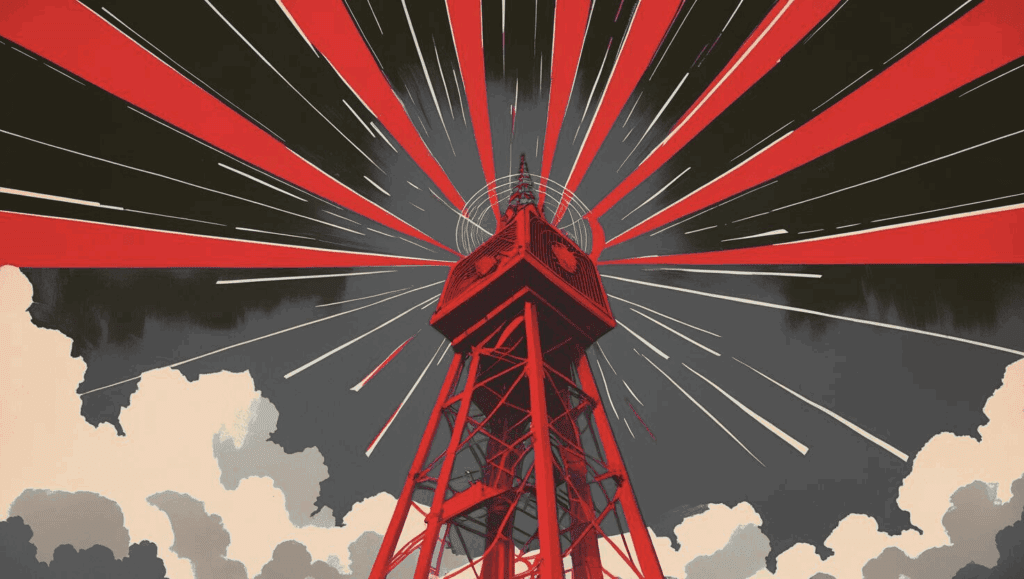
We just witnessed the untimely death of a 57-year-old American institution that has made life better for just about everyone.
President Lyndon Johnson announced the creation of the Corporation for Public Broadcasting in 1967 to “assist stations and producers who aim for the best in broadcasting good music, in broadcasting exciting plays, and in broadcasting reports on the whole fascinating range of human activity.” This new organization, Johnson told the country, would “try to prove that what educates can also be exciting.” This would help create Sesame Street, Mister Rogers, Reading Rainbow, primetime documentaries on Frontline, NPR news magazine shows, advancements in captioning and other media accessibility technologies.
President Johnson went on to say that CPB would “get part of its support from our Government… but it will be carefully guarded from Government or from party control. It will be free, and it will be independent-and it will belong to all of our people.”
Not anymore. By passing the Rescissions Act of 2025, Congress clawed back $1.1 billion in funding for CPB for fiscal years 2026 and 2027 — money already allocated. Now the CPB, which funds more than 1,500 local TV and radio stations across the country, is effectively bankrupt.
Trump and Republicans in Congress tried to justify the cuts as a strike against the supposedly biased reporting from NPR and PBS, but these funding cuts will not be felt deeply at NPR headquarters in Washington or its studios in Culver City. Federal funding is about 1% of NPR’s budget. It’s the small rural stations in states like Colorado, Montana, and Alaska that will be decimated. These rural stations on average rely on CBP for 17% of funding. But 120 rural stations rely on federal funding for at least a quarter of their revenue and more than 30 stations count on it for at least half their funding. In Alaska, for instance, CPB funding makes up 70% of the budget for KYUK, which serves the Yukon-Kuskokwim Delta through public radio and television programs and broadcasts bilingually in English and Yup’ik.
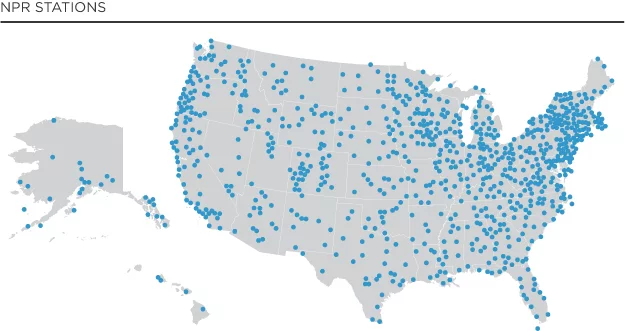
Rural stations and smaller stations are where the loss of funding will be felt most when it comes to coverage of weather, disasters and climate change. I have some insight into this: Before working at UCLA, I was news director at KCRW public radio where I helped launch a climate reporting position and worked alongside NPR on regional collaborations and projects with smaller member stations.
When severe floods, hurricanes, and wildfires strike, public radio is one of the best warning systems and sources for emergency updates. When Hurricane Helene tore through the mountains of western North Carolina, Blue Ridge Public Radio served as a lifeline. People turned to the station for weather reports, power outage updates, and relief aid information. Just recently, while the Senate was considering amendments to the Rescissions Act, a 7.3 earthquake struck off the coast of Alaska, prompting three coastal stations to broadcast live tsunami warnings with some staff even remaining in the danger zone to coordinate emergency messages with public safety officials, according to NPR.
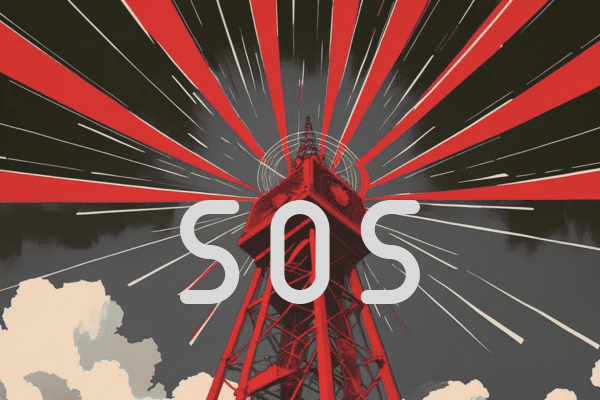 The National Federation of Community Broadcasters, which represents 200 community stations in the U.S., says that defunding CPB will create public safety issues when people can’t access information. “We cannot leave millions without the information they need to stay informed and safe,” it says. “Federal investment in public media is not a luxury—it is a lifeline.”
The National Federation of Community Broadcasters, which represents 200 community stations in the U.S., says that defunding CPB will create public safety issues when people can’t access information. “We cannot leave millions without the information they need to stay informed and safe,” it says. “Federal investment in public media is not a luxury—it is a lifeline.”
This defunding will almost certainly hurt day-to-day local storytelling about climate change. Small and rural stations do not have reporters assigned to, say, the climate beat. They are more likely to have 2 or 3 general assignment reporters who spend part of their time on climate stories. Cut that staff in half and you will lose anything deemed “non-essential” for operations. Many smaller stations also benefit from regional partnerships that let them punch above their weight by carrying special programming and investigations. Managing partnerships takes time and resources that are often not deemed essential. And special programming is the first thing to go when budgets are tapped. Staff reductions will also mean that local reporters in rural areas will have less time to go on the national network and explain firsthand to NPR listeners in cities like LA, New York, and Chicago about the impacts of climate change in their region.
By contrast, large stations in metropolitan areas with major donors and a broad base of financial support will survive, though you can expect to see some downsizing of staff there too. KQED in the Bay Area just announced it was cutting 45 positions — a 15% reduction in staff. “The cuts impact every level of the organization, from top executives to custodial staff, but content-producing departments account for nearly three-quarters of them,” according to KQED’s coverage of its layoffs. The station’s education department is losing 8 out of 13 positions. However, layoffs did not affect any of the KQED reporters who cover climate and the environment, according to one news executive at the station.
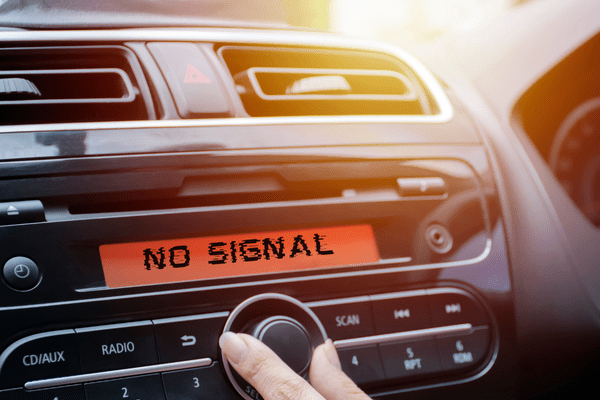
Now let’s look at Texas, where two dozen public radio stations operate. On July 4th, stations in Central Texas featured breaking news coverage of the flash food disaster on their on-air broadcasts and on social media. Texas Public Radio runs 7 non-commercial stations across the south and central parts of Texas, including Hill Country. Since July 3, Texas Public Radio has posted 80 stories about the flood and its aftermath just to its Instagram. KUT, which serves Austin, has since the flood published 38 stories covering just about every angle — from the story of survivors to why flood alerts fail to which regions have early warning systems to National Weather Service staffing issues to debunking conspiracy theories and viral stories. Some of those reports are thanks to the partnership of a regional network called the Texas Newsroom, in which public radio stations share resources and stories with one another. It also produces a statewide, daily news show called The Texas Standard. The floods have led that statewide show nearly every day since the flood. This exhaustive news coverage is a public service with no paywall. You never “hit your limit of free articles.”
So please know that when Republican Rep. Chip Roy of Texas went on Fox News last week to claim that NPR stations were not “interested” in covering the flood, that was an obvious lie. “They were more interested in trying to get people to call their House members and senators to save NPR and PBS than they were in reporting on what was going on with the floods in Central Texas,” Roy said with a straight face. “So we know they’re biased, they don’t need to be funded by taxpayer dollars, now we can save money.”
No, Congressman. Now you can expect the local producers and reporters at Texas public radio stations who “aim for the best,” as President Johnson put it, to be stretched far thinner. You can expect them to work that much harder and that much longer each day to try to keep their local communities informed and safe in an increasingly dangerous world, no thanks to you.
Welcome to The Drain, a weekly roundup of environmental and climate stories. Here’s what else is going on…
Misinformation Around a Rebuilding Authority
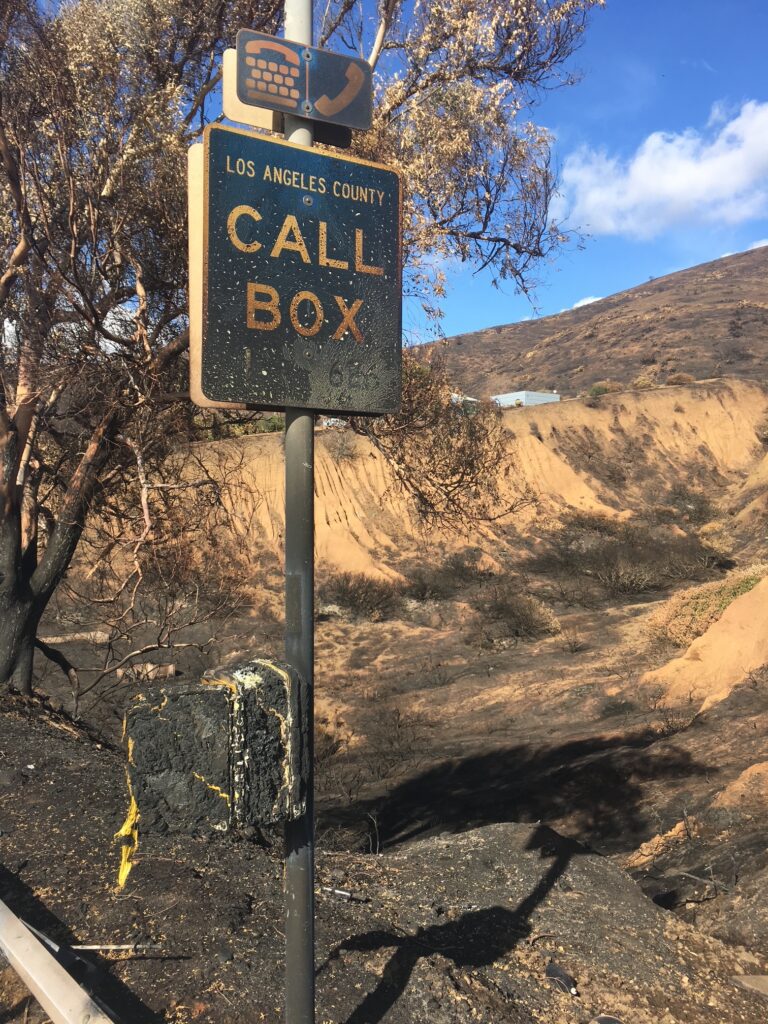 If you need an example of why cities and towns around the US need reliable local media more than ever, look no further than this disturbing episode of misinformation that struck the Pacific Palisades last week.
If you need an example of why cities and towns around the US need reliable local media more than ever, look no further than this disturbing episode of misinformation that struck the Pacific Palisades last week.
I wrote back in June about a proposal by the independent Blue Ribbon Commission, supported by UCLA researchers including my colleague Julia Stein, to create a Resilient Rebuilding Authority to help rebuild from the January fires. This idea for a Rebuilding Authority would potentially help residents return to the area even if they decide they can’t rebuild their home on their own. State Senator Ben Allen proposed SB 549, a bill that would have authorized the creation of a Resilient Rebuilding Authority for the Los Angeles Wildfires. It had a hearing last Wednesday.
The problem was that social media posters, including a reality TV star with a huge TikTok following, ranted against the bill for things it didn’t actually do and that misinformation created mistrust around the legislation. Liam Dillon, housing reporter for the LA Times, has an excellent story setting the record straight. Dillon explains how the policy was misrepresented by AI-reliant social media influencers and then put on ice. Needless to say it’s a bummer to see a bill like that delayed at a time when action is critical for communities impacted by the fires. Let’s see if the idea can gain traction.
Good News

A federal court in California has upheld the South Coast Air District’s Rule 1146.2, a zero-NOx rule for industrial boilers and weather heaters. A district court judge in the Central District of California found the rule was not preempted by the Energy Policy and Conservation Act (EPCA), even though it effectively prohibits gas appliances, because the rule applies to air pollution.
The case is Rinnai America Corp., et al. v. South Coast Air Quality Management District, et al. This is good news for electrification regulations, which suffered a blow in the previous decision in the case of Berkeley’s building codes. Though this decision will likely be appealed, observers think the Ninth Circuit could limit, or overrule, that opinion in California Restaurant Association v. Berkeley.
My UCLA colleague Denise Grab told me that “the court sensibly relied on the Ninth Circuit’s own discussion in the CRA decision, noting that the holding in that case was narrowly limited to the facts in that case (building codes specifically), and distinguished the South Coast rule on the basis that it focuses on pollution rather than energy use. The case will likely be appealed, but in the meantime, it provides support to South Coast to move forward with its water heater and furnace rules, as well as other air agencies to do the same.” A key passage:
“Here, we have a very different situation to that addressed by the Ninth Circuit in CRA. The SCAQMD Rule is not a building code, and it does prohibit or regulate the quantity of natural gas used by appliances. The Rule addresses the pollution appliances emit and not their energy use. It says nothing about the quantity of gas an appliance may use. Nor does its application depend on an appliance’s efficiency or energy use. To the contrary, the Rule regulates appliances’ NOx emissions in order to address air pollution issues and the health risks associated with the combustion of natural gas.”
“For the sake of our lungs, we are thrilled this landmark rule to advance zero-emissions industrial boilers has been upheld by federal court,” Candice Youngblood, attorney on Earthjustice’s Right To Zero campaign said in a press release.
Bad News
The EPA made it official last Friday announcing it was dismantling its scientific research branch. Ending what’s known as the Office of Research and Development “will prompt the exodus of hundreds of chemists and scientists assigned to conduct independent research on a range of environmental hazards,” and is part of a push to cut 23 percent of the agency’s staff, Amudalat Ajasa reports for the Washington Post. EPA claims it will save $748 million.
Trump postponed deadlines to comply with air pollution standards for companies in the coal power, chemical manufacturing, medical sterilization and iron ore processing industries. He issued four proclamations delaying the regulations by two years. The EPA also said last week that it would give utility companies an additional year to begin cleaning up contamination from toxic coal ash landfills.
This week is full of “fossil-fueled appropriations bills and eco-fascist nominees” on Capitol Hill, Brad Johnson writes at Hill Heat. House Appropriators are conducting full committee markups that prohibit funding for things like the American Climate Corps, eco-grief training, or environmental justice activities, Johnson reports. But Washington has also seen mothers from Texas organized by Make Polluters Pay come to the White House this week to memorialize the dozens of victims of the Texas floods.
The megadrought that’s long been affecting the American Southwest could continue through 2050, perhaps even 2100 and beyond, according to new findings published in the journal Nature Geoscience.
The Steve Miller Band canceled all of its U.S. tour dates, citing extreme weather and a “combination” of major natural disasters. Their announcement on Instagram blamed “extreme heat, unpredictable flooding, tornadoes, hurricanes and massive forest fires [that] make these risks for you our audience, the band and the crew unacceptable.”
California
Public participation hearings are coming up in the process of implementing SB 1221 (Min) which establishes a voluntary zonal decarbonization program and designates priority neighborhood decarbonization zones. There’s a public forum planned for August 7 from 2-6pm and SoCal Gas sent out a notice to its customers about participating.
SB 540 (Becker) has bitterly divided California groups normally unified in their opposition to Big Oil. It’s been confusing to watch. Thankfully Sammy Roth published a clear explainer about the dividing lines toward a regional power grid for Boiling Point. The bill may be stalled for this year due to the opposition, though Gov. Newsom said in a statement that abandoning the bill would be turning our backs “on this proven model” and opting “for higher costs and power outages.”
California sued Trump 2.0 for the 33rd (or 34th time, I’ve lost count). The Federal Railroad Administration pulled $4 billion in funding last Wednesday that was intended for construction on high speed rail in the Central Valley and the next day California’s high-speed rail authority sued the Trump administration.
Following the loss of homes in the Altadena fire, some residents are rebuilding by going back to a once-commonplace practice in Los Angeles: relocating buildings from elsewhere, as in actually moving the house, with a little help from a community of vintage house enthusiasts, Frances Anderton reports for KCRW.
FEMA, Disasters, and Extreme Weather
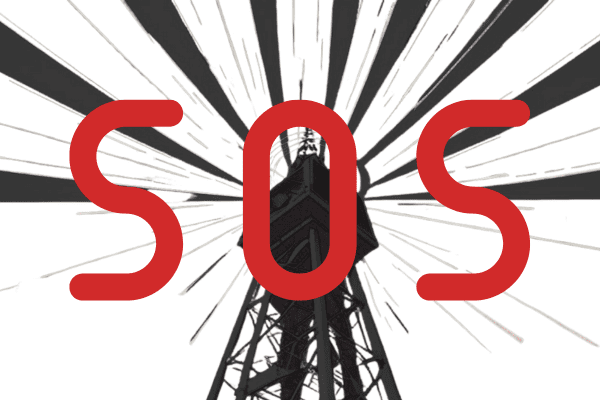
The July 4 floods in Texas caused an estimated $18 billion to $22 billion in total damage, according to AccuWeather experts.
That kind of damage is why the National Association of Counties — which represents more than 40,000 county elected officials and 3.6 million county employees — passed a resolution at its annual conference this month to oppose any legislation that would restrict their ability to recover associated damages from fossil fuel companies in court. Climate Integrity has this analysis.
A coalition of 20 states is suing the Trump administration over illegally shuttering FEMA’s Building Resilient Infrastructure and Communities (BRIC) program, which has supported critical infrastructure to protect communities from disasters before they happen.
Right-wing lawmakers and commenters have made a flurry of (batshit crazy) allegations that a California cloud seeding company named Rainmaker was to blame for the flood, as Hayley Smith writes for LAT and Moses Buchele reports for KUT in Austin. Though these claims were quickly debunked by experts like Daniel Swain, with a number of independent scientists saying that the company’s actions could not have produced anywhere close to the amount of rain that triggered the flood, Rep. Marjorie Taylor Greene introduced a bill about weather modification and the EPA launched two new websites to “address public questions and concerns ” about weather modification, geoengineering, and contrails.
Wildfires are ripping through parts of the Northwest. The Cram Fire in central Oregon became the nation’s largest wildfire this year as the blaze neared 100,000 acres over the weekend.
Last week, firefighters worked to contain the destructive Dragon Bravo Fire on the North Rim of Grand Canyon National Park. Gov. Katie Hobbs has called for an investigation of the federal government’s response to the blaze and she plans to meet with US Forest Service leaders and the Department of the Interior secretary this week in Washington.
Fallout from the GOP Tax Bill
Tucked inside the “One Big Beautiful Bill Act” is $1 billion to help the fossil fuel industry, reports Kelsey Brugger for E&E News. The funding, not in the original House bill, could go toward coal mining and the electric grid. It has some senators asking how the Trump administration intends to spend the money and admitting that they didn’t know about many of the provisions they were voting yes on.
Heatmap News has created one big beautiful cheat sheet for how clean energy policy has changed over the last couple decades, including IRA and OBBBA.
Alaska Senator Lisa Murkowski said she feels “cheated” after she won a concession in the tax and spending law to preserve wind and solar projects, only to see Trump issue executive orders that will quickly kill such projects.
Energy
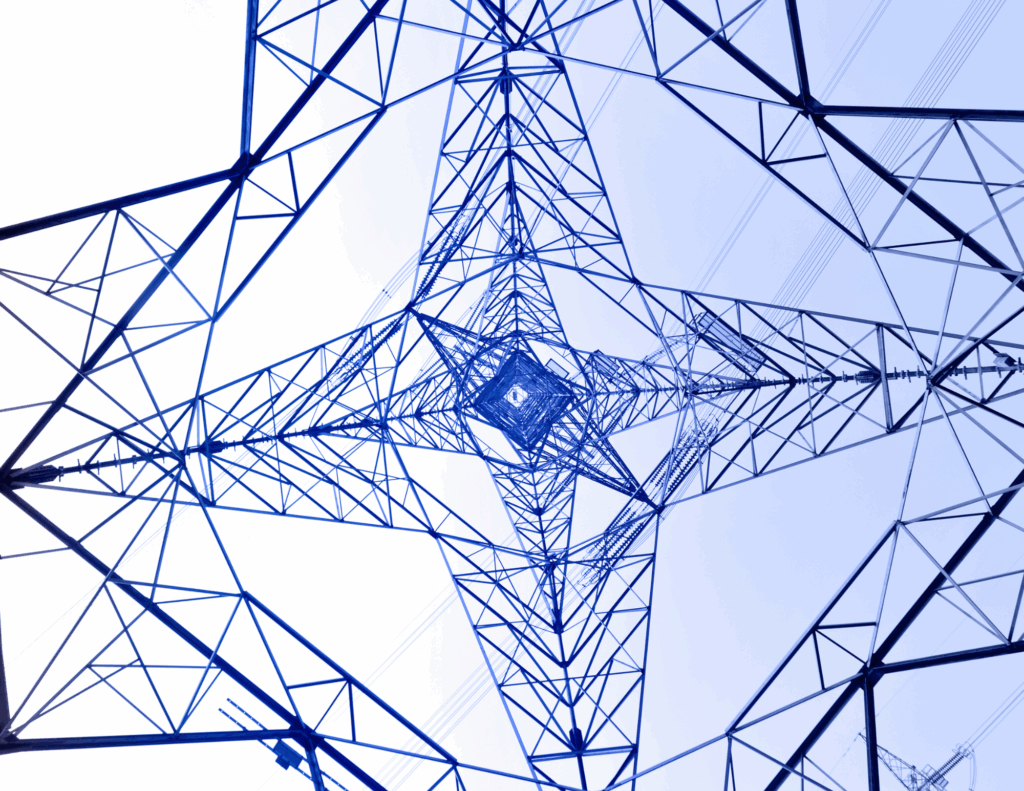
Trump’s Interior Department plans to put solar and wind projects through a much more stringent (and political) review process, saying that moves toward approval will have to be vetted by Interior Secretary Doug Burgum’s office. Jael Holzman first reported the plan in a memo. In a press release on Thursday, the department confirmed all “decisions and actions concerning wind and solar energy facilities will undergo elevated review by the Office of the Secretary.”
A wide array of clean energy supporters bashed the policy as a “shadow ban” on wind and solar energy projects that purposefully adds red tape to the approval process, E&E reports.
Trump plans to deliver a keynote on artificial intelligence in an event on Wednesday, Mohar Chatterjee reports for Politico Pro.
Grain Belt Express, the largest transmission infrastructure project in U.S. history and which is already approved by four states over the course of a decade-long development, is in danger of being canceled because of one phone call from Trump, egged on by Missouri Sen. Josh Hawley, reports David Gelles for the NYT.
There are probably more than one million orphaned oil wells in the US by some estimates. NPR’s Camila Domonoske went out in the field with an orphan well hunter to explore what it takes to plug just one well — and the environmental impact of aging oil and gas infrastructure, something most Americans don’t think about.
Utilities in the US have requested or secured a record-setting $29 billion in rate increases in the first half of 2025, Maeve Allsup reports for Latitude Media. “That’s more than double the price of hikes this time last year; in the first half of 2024, utility rate increase requests and approvals reached $12 billion.”
The White House had named David LaCerte, a Project 2025 contributor and an official in the U.S. Office of Personnel Management, to fill a vacant seat at FERC. LaCerte has served as the principal White House liaison and senior advisor to the director of the OPM since January, according Utility Dive. LaCerte may be the least qualified FERC nominee in US history, writes my Legal Planet colleague Dan Farber.
Chevron announced that its merger with Hess Oil is now complete, making in the largest holder of acreage in the Gulf of Mexico.
The oil and gas industry needlessly flaring has pumped an extra 389 million tons of carbon pollution into the atmosphere last year, a World Bank report has found, in an “enormous waste” of fuel that heats the planet by about as much as the country of France.
About 700 high-speed, public charging stations opened in the U.S. in the second quarter, the second-largest such infrastructure boom on record, according to Department of Energy data. The Trump’s administration’s funding freeze on new charging stations has not yet impeded buildout.
Climate Prayer
Pope Leo XIV recently held a special Mass in the gardens of the Vatican’s new ecological educational center, calling on people to address the urgency of the climate crisis and to change their mind about what is causing “the world to burn” while urging Catholics to “hear the cry of the poor.”
“We must pray for the conversion of so many people, inside and out of the church, who still don’t recognize the urgency of caring for our common home,” the pope said. “We see so many natural disasters in the world, nearly every day and in so many countries, that are in part caused by the excesses of being human, with our lifestyle.”






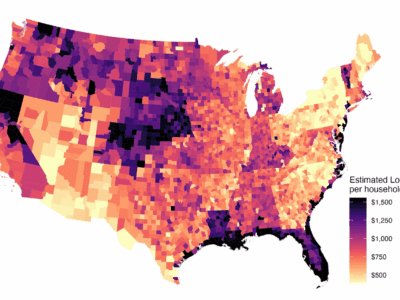
Reader Comments